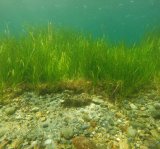Watershed Assessment Research
- National Aquatic Resource Surveys and National Assessment
- Responses of Aquatic Resources to Stressors
- Water Quality Benefits and Modeling
The physical, chemical, and biological integrity of aquatic resources across the United States are threatened by multiple stressors, including climate change. To address these stressors and protect and restore aquatic resources, EPA is advancing research to support monitoring and assessment, characterize responses to cumulative impacts of multiple stressors, and estimate economic benefits of water quality improvements.
By improving EPA’s capabilities for economic valuation and the linkages to water quality improvements, research in this area will provide water resource managers with essential science and tools to advance water quality goals.
National Aquatic Resource Surveys and National Assessment

EPA’s National Aquatic Resource Surveys (NARS) are designed to assess the quality of coastal waters, lakes and reservoirs, rivers and streams, and wetlands in the United States; track changes over time; and provide critical information for protecting and restoring water quality at national and regional scales. The surveys are designed and implemented as an EPA, state, and tribal partnership. While continuing to assess known stressors to aquatic resources, NARS faces the challenge of developing indicators and approaches for assessing climate change impacts on these waters.
EPA researchers are providing the following science and technical support needed to help implement and improve NARS:
- Evaluating, improving, and expanding assessment benchmarks and indicators (including assessment thresholds for indicators).
- Harmonizing datasets and developing national reports.
- Evaluating survey design frames, target populations, and analysis approaches for ranking single and multiple stressors.
- Advancing the application of DNA technologies and exploring remote sensing approaches for use in assessments.
Results of this research will make NARS data more broadly accessible to better support policy and management decisions at spatial scales beyond the traditional national and regional NARS focus. The knowledge, tools, and training developed by EPA will help decision makers use NARS data to manage aquatic resources proactively and adaptively.
Additional Information and Resources:
- National Rivers and Streams Assessment 2018-2019 Report
- Environmental Indicators in Aquatic Surveys
- Modeling Biological Indicators Across Space and Time (webinar recording)
- NARS Publications in Science Inventory
Responses of Aquatic Resources to Stressors

EPA research is addressing the need to characterize the responses of aquatic resources to the cumulative impacts of multiple, interacting stressors across space and time.
Scientists are developing indicators, techniques, and methods to assess stressor-response relationships and impacts of multiple stressors, including climate change impacts. This is being done across a range of aquatic resources, including streams, wetlands, coral reefs, submerged aquatic vegetation, and estuaries. Studies on the development and improvements of biological assessment and monitoring tools, data, and applications continue and include case studies at local levels.
Results of this research will empower communities to make informed decisions on restoration and conservation priorities and promote equitable distribution of the resulting benefits.
Related research: EPA scientists assist with National Coastal Condition Assessment intensification survey in Florida’s Pensacola and Perdido Bays
Water Quality Benefits and Modeling

Federal, state, Tribal, and local management actions to improve water quality can lead to a broad range of benefits for communities. EPA’s research is increasing the understanding of benefits associated with different waterbody types and our ability to evaluate climate change, environmental justice, and equity issues within a water quality benefits framework.
Gaps being addressed through research:
- Missing or incomplete categories of water quality benefits.
- Current measures and models used for economic valuation can be inconsistent and limited in scale.
- Distributional impacts of water quality benefits, including how water quality changes impact overburdened communities.
Related research: Human Dimensions of Water Quality Research
